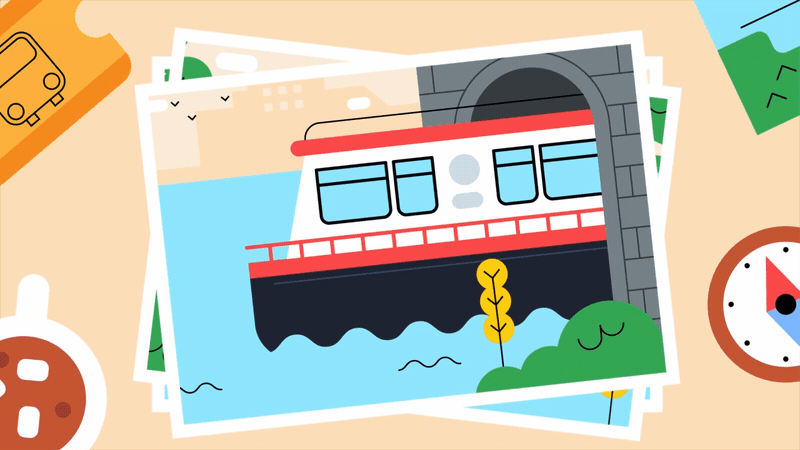
Water-way to go
You’ll need
- Water bottles
- Camera or phone
- Ordnance Survey maps
- Appropriate footwear such as walking shoes/boots
- All-weather hiking clothes
- Rucksack
Before you begin
- This activity can be done as part of a camp, an overnight stay or as a weekend activity in your local area.
- Make sure everyone has the right kit for the hike and weather.
- When planning for the Hikes Away Staged Activity Badge, ensure the chosen route meets the time requirements.
Start planning
- The person leading the activity should separate everyone into small groups, each with someone to support with map reading and route planning.
- Each group should spread an Ordnance Survey map out so everyone can see.
- Everyone should look at how waterways are marked on the maps and see if they can find some waterside walking routes.
Look for towpaths along canals, footpaths beside rivers and potential circular routes.
- Everyone should talk about the water-related features they might see while hiking.
Some may be marked, such as a nature reserve (duck) or fishing area (fish). Talk about the different ways water is used, for example it’s a home for marine wildlife, used for leisure activities like sailing or fishing, a means of transport and source of power for industry.
- The groups should also look for any historic landmarks.
For example, canals connecting towns or cities were built to transport coal or other goods, and waterwheels or mills ground flour and powered manufacturing.
- Together everyone should plan a route that follows a waterway and includes plenty of interesting places for breaks.
Head out on your hike
- Following the route, everyone should try spot water features.
Always stay safe when looking for interesting sights. Look for bridges, locks, waterwheels, mills, lock keepers’ cottages, drains and water flowing under roads. Spot waterway plants and wildlife like water birds, reeds, willows, and fish.
- The person leading the activity should encourage everyone to take photos of any interesting features as a record of the hike.
Reflection
This activity encouraged everyone to be active while enjoying the outdoors. It also increased their awareness of the role of water, and the importance of waterways today and in the past.
During breaks, everyone should talk about the things they saw. What plants and animals did they see, and do they know why these live on the waterways? For example, fish and birds use plants like reeds and rushes to hide from predators, and animals like otters and kingfishers hunt for tasty fish. Without waterways, life like this could not thrive. So why is it important to look after waterways and prevent pollution?
Everyone should talk about how they feel during the hike: are they energised, refreshed or tired? Hiking is more about endurance and perseverance than speed or strength, and it’s fun to slow down and take in the sights and sounds. Well done to everyone for keeping going and supporting each other.
Safety
All activities must be safely managed. You must complete a thorough risk assessment and take appropriate steps to reduce risk. Use the safety checklist to help you plan and risk assess your activity. Always get approval for the activity, and have suitable supervision and an InTouch process.
- Outdoor activities
You must have permission to use the location. Always check the weather forecast, and inform parents and carers of any change in venue.
- Hiking and walking
Follow the guidance for activities in Terrain Zero, or the guidance for each the adventurous activity.
- Phones and cameras
Make sure parents and carers are aware and have given consent for photography.
- Near water
Manage groups carefully when near water. The guidance on activities near water will help you to keep your group safe.
Read RoSPA’s Group Safety at Water Margins guidance.
While planning the route, come up with a list of items to spot. For example, it could include three bridges, two different types of water bird and a canal lock.
Before you head out, check the route is accessible for the needs of the whole group.
All Scout activities should be inclusive and accessible.
Combine your walk into a community project about clean water or capture photos for the Photographer Activity Badge.
Encourage young people to make the hike their own by planning the route around their favourite landmarks.
